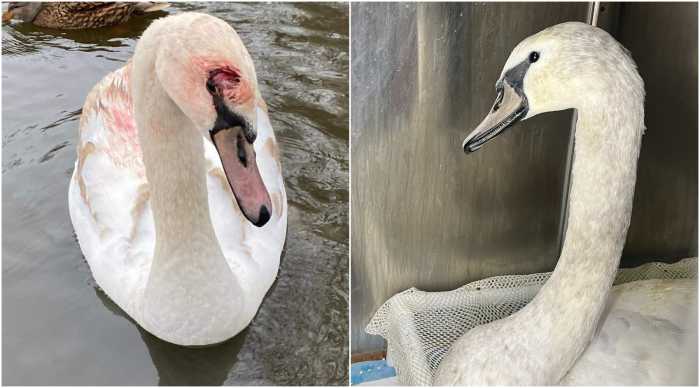BY Helaina N. Hovitz
Wall Street workers have been taking more than just a load off during their lunch hour; they’re taking ten years off of their faces and returning straight to work.
Doctors across the country have spent the past year performing “knifeless facelifts” on patients in their 40’s and 50’s using the Ulthera System, a new, non-surgical device that uses ultra-sound technology. Now, Ulthera has finally found its way Downtown and into the hands of the man behind the machine.
Cosmetic surgeon Dr. William Matthew White, 42, who fathered the concept and began receiving nation media attention in November, has officially begun using the device at his NYU Langone Medical Center Trinity Center practice. He authored the first paper on the machine that targets the layer of skin that lies directly underneath the outer surface, the SMAS layer. Up until three months ago, he only performed face and neck surgery the traditional way. He officially added “Ultherapy” to his practice in September.
The treatment is a less expensive alternative to surgery, and a convenient one at that; the entire procedure takes between thirty and forty minutes, and because there is no anesthesia or cutting involved, the patient can return to work within the hour. The device is the first of its kind to receive FDA approval and uses sound waves to stimulate the regeneration of collagen, which the body produces naturally.
Dr. White, who also works as an assistant professor at NYU, appeared on national television for the first time in November, explaining how the device works on Good Morning America.
“More and more studies have been coming out that help us better understand how the face ages, and it’s not just the skin,” Dr. White said. “What we’re able to do is increase the critical support systems within the face, and that’s what lifts and tightens the face and makes it appear more rejuvenated.”
The Ulthera System tightens the SMAS layer by delivering energy into the tissue, which stimulates the fibroblasts to generate new collagen. Because it assists the body in regenerating a substance that it produces naturally, many patients have begun opting to undergo Ultherapy in place of Botox injections.
Dr. White spent three years working with a team of five other doctors to develop the concept of the machine, which the FDA approved in September of 2009. At the time, Dr. White was still finishing his fellowship in facial plastics with NYU, and was unable to offer his Lower Manhattan patients Ultherapy until September of this year.
“After my fellowship was over, it then took me a while to convince the department to purchase the machine,” Dr. White explained. “It’s not cheap.”
Most patients see an improvement immediately after undergoing treatment, but it takes three months for collagen to fully regenerate. Until then, says Dr. White, the results will gradually keep getting better. Since the device has only been on the market for a little over a year, he cannot say with certainty that the effects will last longer, but believes that results should last up to two years, at which time the patient can return for subsequent “booster” treatments.
Irena Ciccone, 64, a former plastic surgery nurse at Beth Israel, decided to have the procdure done after seeing Dr. White on television, and just hit the three-month mark.
“I saw a significant improvement just a few days later,” said Ciccone of the areas that were treated. “Now, I see dramatic changes in the laxity I had around my mandible, my neck, and with my crow’s feet.”
Patients seem to like the subtlety of the results, which are less dramatic than those achieved with a facelift. Ciccone knows firsthand that nothing can truly take the place of an old-school cosmetic operation, but prefers the “natural-looking” results she walked away with.
“I wanted something subtle, and that’s what I got,” she explained. “I went right back to work on Monday, and nobody even knew I’d had a procedure done.”
While the operation was underway, however, Ciccone was well-aware that she was being “operated on.”
As Dr. White puts it, the procedure is not all rainbows and butterflies, and the beauty-is-pain philosophy is something his patients must still ascribe to. Though they leave his office virtually pain-free, most of Dr. White’s patients experience moderate discomfort during the actual procedure. He offers them medication to help ease the pain, which patients liken to a needle going in and out of their skin.
The doctor likes to assure his patients that their pain is not in vain, and always stops for a “halftime analysis” so they can see that the treatment has already begun working. Despite the discomfort, most of his patients have already expressed a willingness to return for subsequent “booster” treatments, including Ciccone, who currently works full time as a nurse manager at Beth Israel Medical Center.
“I may do something surgical someday, but I’ll go back every couple of years for a while,” Ciccone said. “I just don’t have the time to take for a surgical procedure.”
But a natural anti-aging treatment that works from the inside out does come at a substantial price.
While a face full of Botox will run patients about $1,200, it is still less than any of the Ulthera treatments offered. Whether it’s the full face or several problem areas that are targeted, the cost of Ultherapy ranges anywhere from $1,500 to $4,000. Dr. White estimates that even if patients return every two years for subsequent treatments, the cost will still pale in comparison to the average $25,000 an Upper East Side surgeon rakes in for a traditional facelift.
The best candidates for the procedure are men and women ages 40 to 55 that have begun to see early signs of aging and want to look “refreshed.”
“People who are either under 40 or who have more advanced aging aren’t going to get the results they’re looking for,” said Dr. White. “If you have severe sagging or wrinkles, you’d do better with Botox or a surgical facelift.”
Dr. White made an exception, however, for Ciccone, and while she is happy with her results, she can see why he is usually more selective.
“They say it’s better to get on it right away, when the first signs of aging begin, and I didn’t do that,” said Ciccone. “I’m sure for somebody younger with more elasticity in their skin, the results would be different.”
Dr. White said that the treatment is a great alternative for people who aren’t quite ready to go under the knife, as well as those who are poor health candidates for undergoing surgery. The device has been the most popular, however, among female workers down on Wall Street.
“We’re seeing more and more evidence of age bias in the workplace these days. Professional women who work on Wall Street have all these years of education under their belt, but they’re worried about the younger people who are coming to work in their department,” Dr. White said. “People are starting to think, ‘Maybe if I look more vibrant, I might be more marketable,’ and a lot of studies have been coming out saying that is indeed the case.”
While the Ulthera system may be a purely cosmetic device, Dr. White believes that well-being begins from the inside out. This new technology, he believes, will vastly improve the quality of life of anyone qualified to undergo treatment.
“I don’t see patients that come in and say, ‘I want to look like Angelina Jolie,’” explained Dr. White. “They come in saying, ‘I work really hard, I have a family, and I just want to look refreshed.’”
Dr. White has personally treated over sixty patients, a third of which are men, since he began using the device in September of this year. He estimates that over 10,000 people worldwide have already been treated with the Ulthera system.
This is not the first innovative success for Dr. White, who also worked on the development of a device capable of imaging the skin without taking a surgical biopsy. He now uses the imaging system to plan and personalize each patient’s Ulthera treatment.
Dr. White grew up in Ohio, where he later attended medical school. Born with a chest wall deformity that needed four correctional operations, Dr. White viewed his doctor as a mentor, and still speaks of his tireless dedication with the same level of admiration.
“I remember thinking, with all I’ve been through myself, can you imagine if somebody had a deformity in their face? It’s how you meet and greet people, and it’s your source of expressing emotion,” he recalled. “That’s what really drew me to facial plastics, and to working with people who’d been in accidents. I wanted to be able to help.”
Hundreds of prospective patients have called the office asking for Ultherapy consultations this month, indicating that looking ten years younger — without looking waxy or over-pulled — is worth a few intense zaps to the face.
Only time will tell, but Dr. White could very well have begun to foster an entire generation of women that are proud to share their age with the world. For those who ascribe to his philosophy that the secret to feeling good is looking good, money may just be able to buy happiness after all.

































